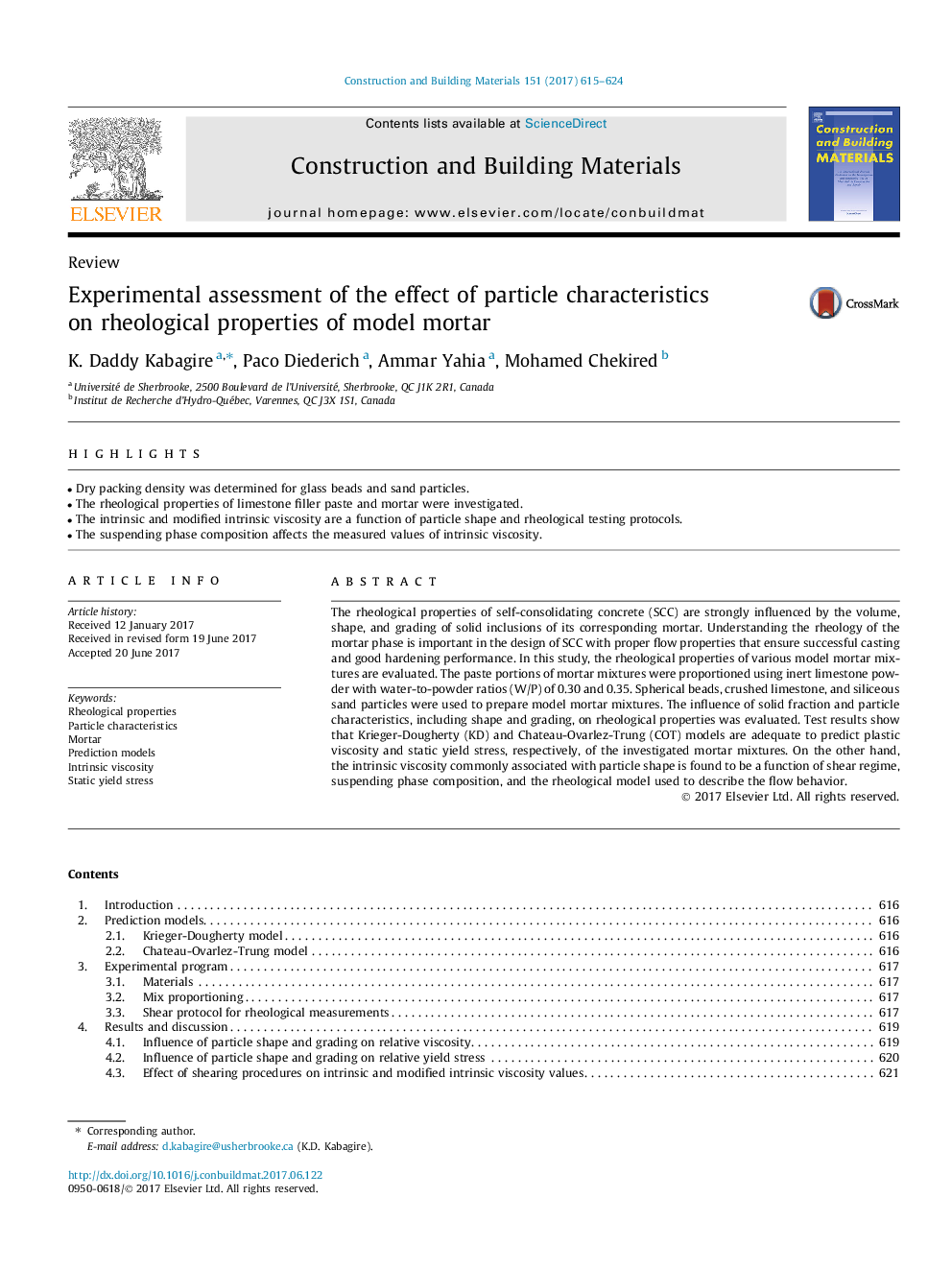| Article ID | Journal | Published Year | Pages | File Type |
|---|---|---|---|---|
| 4918154 | Construction and Building Materials | 2017 | 10 Pages |
Abstract
The rheological properties of self-consolidating concrete (SCC) are strongly influenced by the volume, shape, and grading of solid inclusions of its corresponding mortar. Understanding the rheology of the mortar phase is important in the design of SCC with proper flow properties that ensure successful casting and good hardening performance. In this study, the rheological properties of various model mortar mixtures are evaluated. The paste portions of mortar mixtures were proportioned using inert limestone powder with water-to-powder ratios (W/P) of 0.30 and 0.35. Spherical beads, crushed limestone, and siliceous sand particles were used to prepare model mortar mixtures. The influence of solid fraction and particle characteristics, including shape and grading, on rheological properties was evaluated. Test results show that Krieger-Dougherty (KD) and Chateau-Ovarlez-Trung (COT) models are adequate to predict plastic viscosity and static yield stress, respectively, of the investigated mortar mixtures. On the other hand, the intrinsic viscosity commonly associated with particle shape is found to be a function of shear regime, suspending phase composition, and the rheological model used to describe the flow behavior.
Keywords
Related Topics
Physical Sciences and Engineering
Engineering
Civil and Structural Engineering
Authors
K. Daddy Kabagire, Paco Diederich, Ammar Yahia, Mohamed Chekired,
